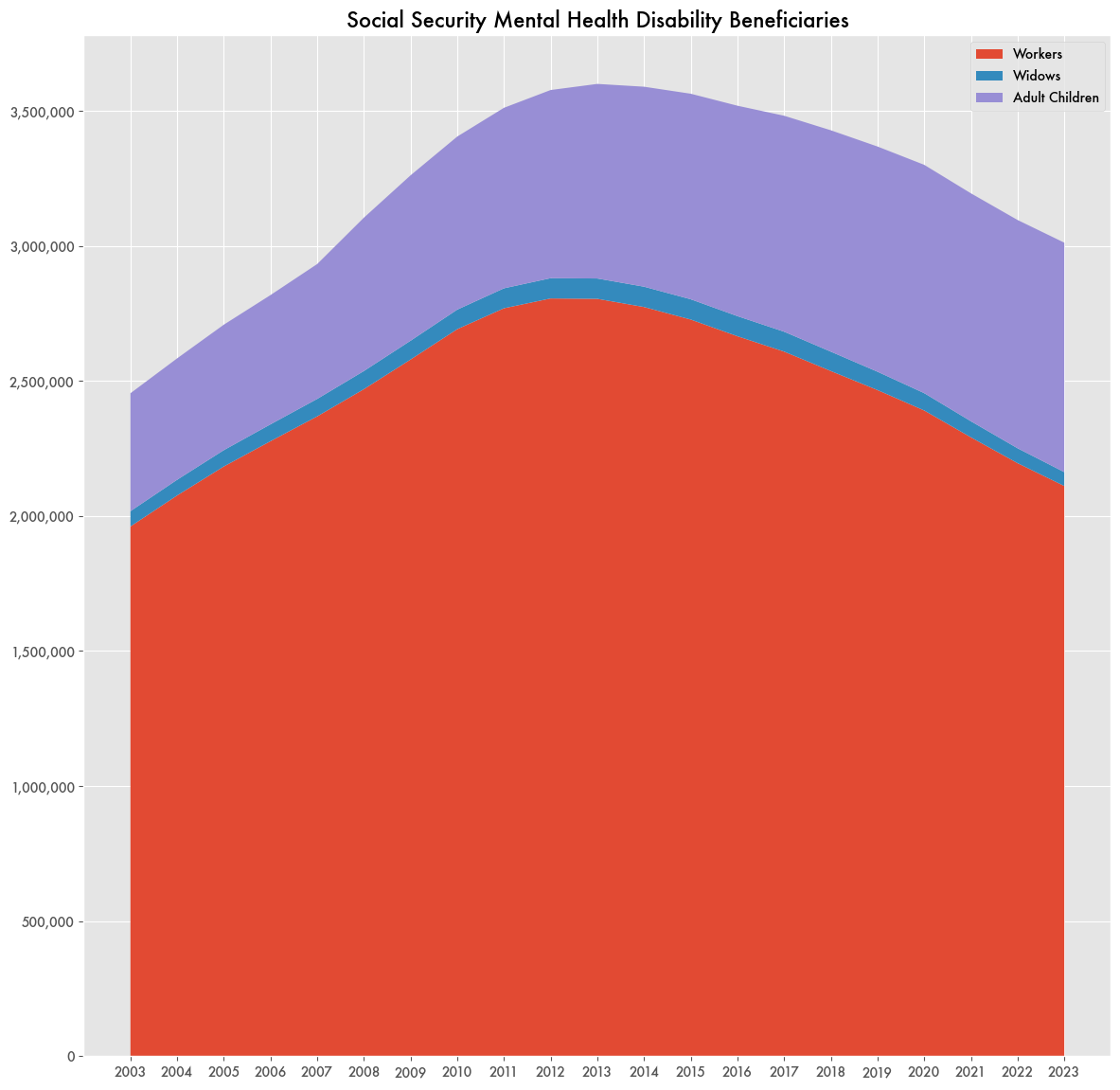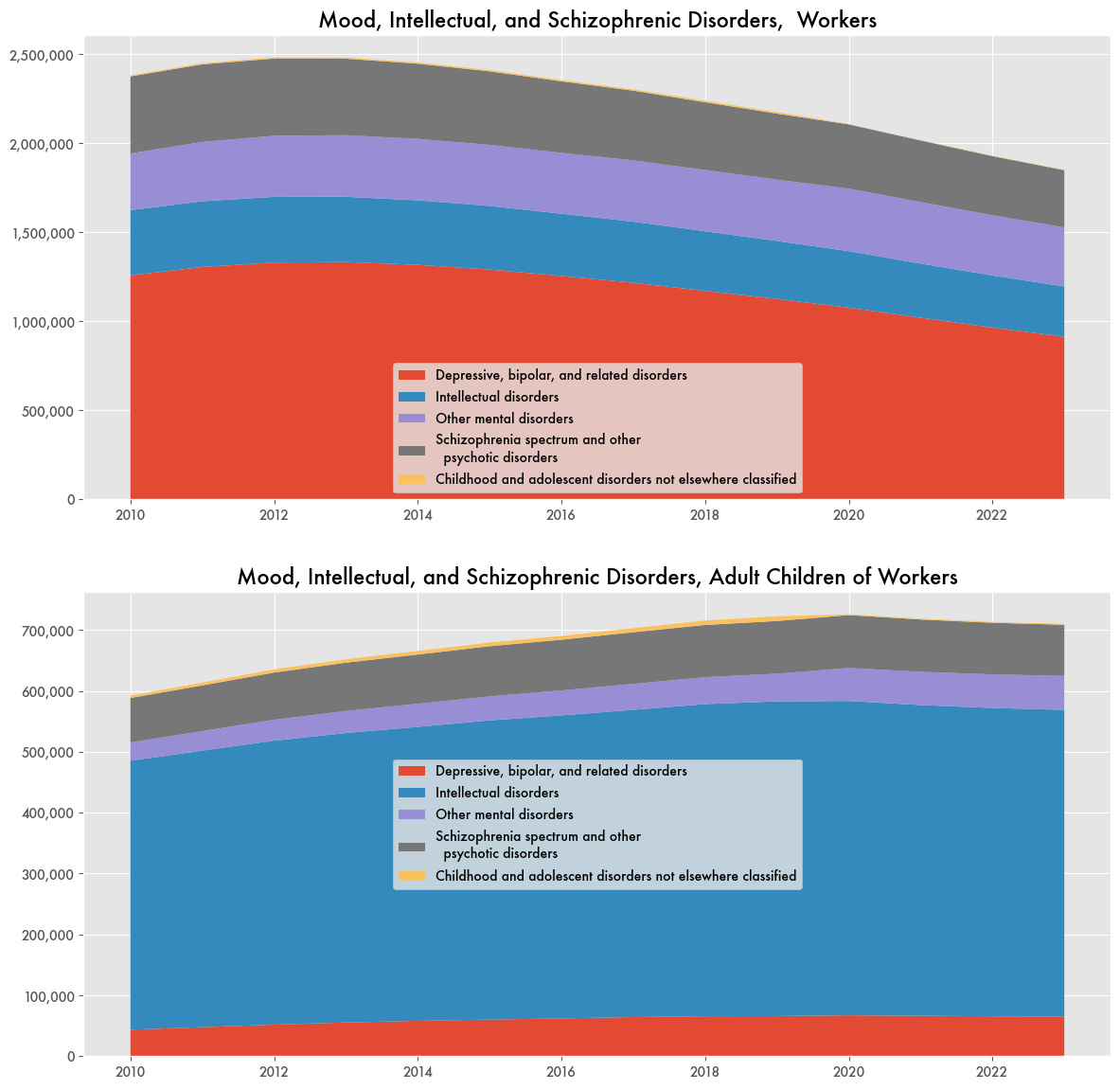The Declining Mental Health Claims for Workers, But the Opposite for Their Children
Recent health research shows a continuing increase in mental health disorders like bipolar disorder and depression. Prevalence of bipolar disorder in adults in the U.S. is now on the order of 2.8 percent of the population according to the National Institutes of Mental Health.
And Social Security disability benefit data also shows that trend with a large growth in mental health claims—but only through 2013. Between 2003 and 2013 approximately a million more adults per year would apply for benefits because of mental health issues.
After 2013 the number of those in the program diagnosed with depressive, bipolar, or other similar mood disorders has been in substantial decline. The same goes for schizophrenic diseases. Together, those categories constitute the larger portion of mental health disability claims—about 54 percent in 2010.
While that largely applies to the workers who receive Social Security disability benefits, the same can’t be said for the adult children of workers who qualify for benefits. Those have been steadily increasing.
Adult children once represented 19 percent of mental health claims in 2010. That is now 28 percent in 2023, or 208,750 more individuals. For those with autism spectrum disorders, they have increased six-fold.
Caveats on Social Security Mental Health Statistics
The Social Security numbers are not necessarily representative of the total adult population, and there can be varying reasons for recipient numbers to decline besides improved mental health. Yet Social Security data may be significant as recipients are required to not only have a medical diagnosis from a professional but prove that the condition is severe enough to impair their work.
There is also an inconsistency as to how mental health conditions are reported as definitions change with time and sometimes overlap with other conditions. Prior to 2010, Social Security listed most mental health conditions simply under the term “retardation” with no other detail as to what specific category they might fall under.
The year when total mental health beneficiaries began to decline, 2013, is also the year the fifth edition of the Diagnostic and Statistical Manual of Mental Disorders (DSM V) was released. The DSM is the de facto reference guide for mental health disorders in the U.S., and when it changes definitions, it significantly alters how mental health conditions are diagnosed.
The DSM V would include large scale changes like rearranging how disorders were categorized—removing the multi-axial system and Global Assessment of Functioning (GAF score) of previous editions—and altering the definitions of various syndromes.
The inclusion of Autism Spectrum Disorder in the DSM IV in 1994 would lead to a large growth in autism diagnoses, but there is ongoing debate as to whether the growth in autism diagnosis is a remnant of the changes to the DSM and better identification, or if there is ongoing evidence of an autism epidemic.



